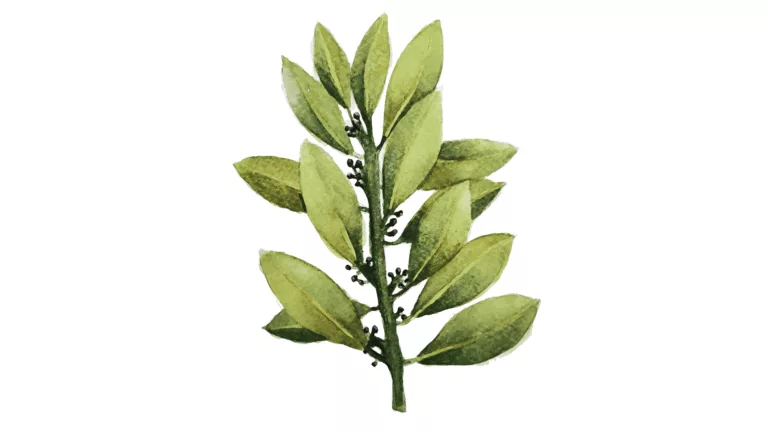Bay Leaf

The bay laurel (Laurus nobilis) is an aromatic tree belonging to the laurel family (Lauraceae). Its most distinctive feature is its elliptical, fragrant, dark-green, glossy leaves, which have been used as a seasoning for centuries. The laurel blooms with small, pale-yellow flowers arranged in raceme-like or star-shaped clusters.
The botanical name Laurus derives from the Latin word laus (“praise”) and is associated with the laurel wreath, which symbolized the halo of victory, glory, and majesty. The Roman emperor Julius Caesar, the French emperor Napoleon, and the last tsar of the Russian Empire, Peter I, were depicted wearing laurel wreaths.
The story of laurel begins in the mythology of Ancient Greece. In his Metamorphoses, Ovid tells of the nymph Daphne, daughter of Gaia and the river god Peneus. She vowed chastity. Struck by Eros’s arrows, the sun-god Apollo fell in love with her. Wearied by Apollo’s pursuit, Daphne asked her father to change her form to escape him. The gods took pity and turned her into a laurel tree. Apollo, heartbroken, fashioned a wreath from its leaves, which thereafter became his symbol.
Bay leaves became a sacred plant for Apollo and his son Asclepius—the ancient Greek god of medicine. Laurel branches were used to cover and adorn temples and altars dedicated to Apollo. The ancient Romans wove laurel wreaths for their finest commanders and for the victors of poetic contests and athletic games, since it was customary to crown every winner with laurel.
Used in large quantities, the leaves have a moderate narcotic effect. Before entering prophetic trance, the priestess of the Delphic oracle in Ancient Greece was said to chew laurel leaves.
Laurel was believed to attract luck and wealth and to ward off evil. If such a tree died, it was taken as a bad omen. According to legend, all laurel trees perished when Rome was conquered in the 4th century. During plague outbreaks the Romans burned laurel leaves in public squares, and the same practice was used in the 16th century.
The Roman emperor Tiberius always wore a laurel wreath during thunderstorms, believing it secured the gods’ protection from lightning and thunder. In Christian tradition, laurel symbolizes the Resurrection of Christ.
Bay leaves possess potent medicinal properties. Herbalists often use them to treat snakebites, insect stings, and to soothe cuts, wounds, and bruises. The plant’s antifungal and antibacterial properties are applied to a range of skin problems.
The noble laurel leaf is a popular culinary spice. But according to folk customs and beliefs, it is also a powerful talisman that attracts wealth and good fortune. It is said to have beneficial energetic and magical properties. Bay leaves increase vital energy and open the chakras. According to the principles of feng shui, all space around us is permeated with fine threads of qi—creative currents that nourish human strength and create harmony in the home. The laurel tree has the power to turn a home into a source of strength and harmony.








